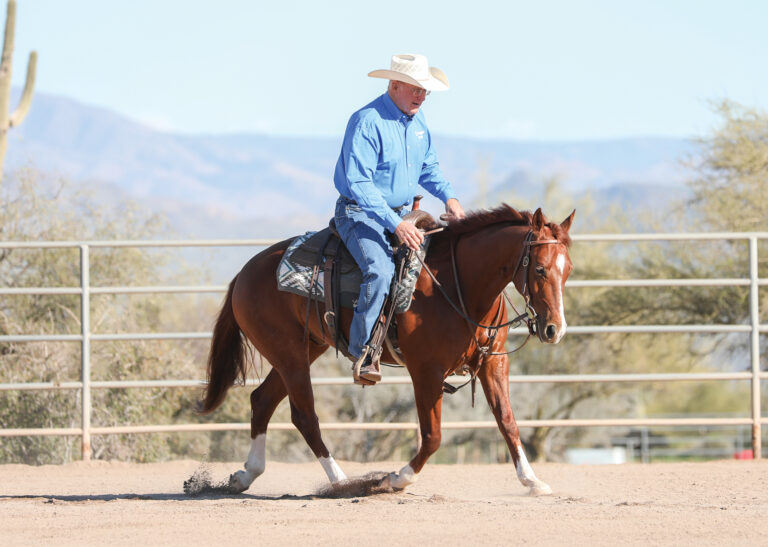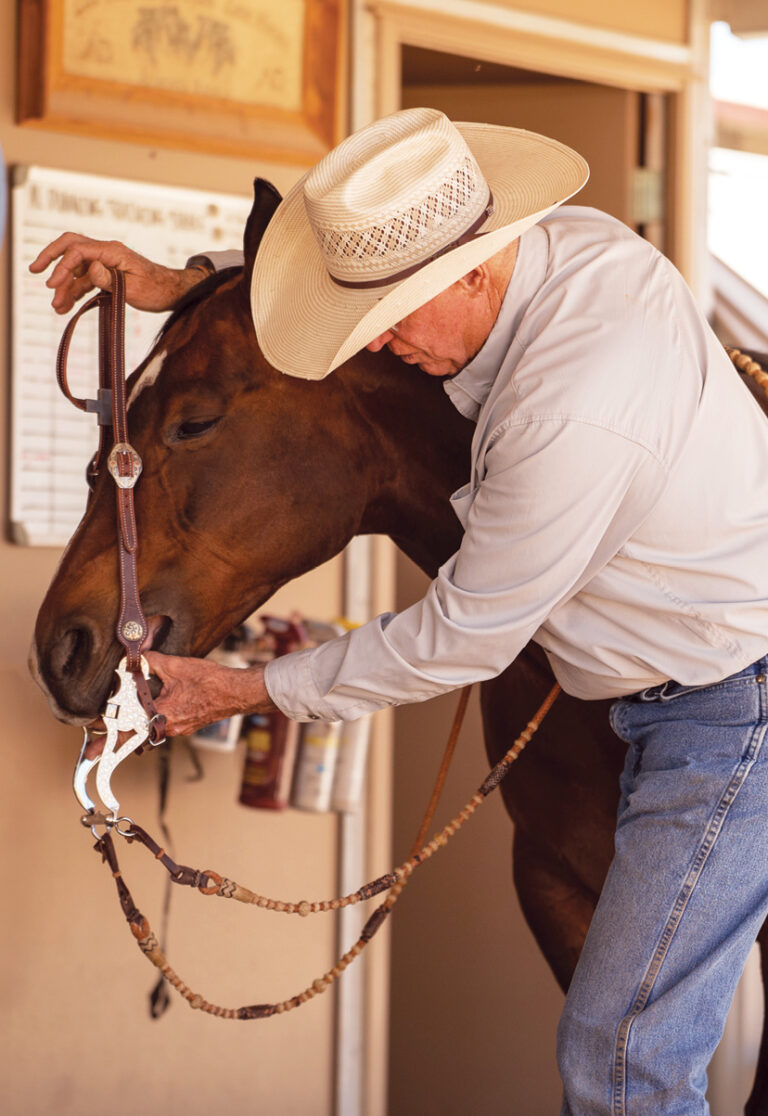
A good snaffle bit is worth its weight in gold (or copper or sweet iron). You can easily identify a quality snaffle by its smooth, easy pull. It’s made to slide across your horse’s mouth, without pinching. And it’s a go-to for starting young horses and training aged mounts in almost any riding program.
Here I’ll share my snaffle bit philosophy, proper use, and four of my go-to favorite snaffles from my own tack room.
Snaffle ‘Rules’
There are a few rules to follow when using a snaffle, both for safety and to get the best response.
Use a browband headstall. You can’t rely on a one-ear or slit-ear headstall to keep your snaffle in place. A browband headstall, with a properly adjusted throatlatch, keeps your horse’s headgear in place for proper use. As you pull on the snaffle with your reins, the browband headstall should have some give.
Go for a loose adjustment. Loose doesn’t mean it should slop around in your horse’s mouth, but you don’t want it tight, either. The snaffle should just touch the corners of your horse’s mouth so that it can slide across his bars. It slides more readily when it’s not tight.
Consider the connection. I prefer mouthpieces that have loop-to-loop connections, like those shown here. There are several other connections to choose from, including a three-piece connection that has a flat piece of metal in between the two loops. But loop-to-loop is the most traditional and reduces pinching. Hinge mouthpieces are also popular, but they’re not the same on both sides of the connection, reducing the bit’s balance.
Skip the curb strap. These aren’t curb bits, so they don’t require a curb strap, and certainly not a curb chain. The only reason to use a curb strap on a snaffle is if you tend to pull one of the snaffle’s rings through your horse’s mouth. If you do use a curb, be sure it’s a leather one, adjusted loosely in front of your reins—never behind your reins. The curb’s only purpose with a snaffle is to keep the rings in place—there shouldn’t be any contact made with the curb to your horse’s jaw when you pull on your reins.
Use tie-on reins. I strongly encourage using reins that tie to the snaffle’s rings with leather or have another leather connection. Snaps can wear out, rust, and break, as well as hang up on other parts of equipment. They can be a safety hazard.
Use a smooth pull. Horses aren’t born with light mouths. It’s trained into them. Use a smooth pull, as strong as necessary to get a response, when riding in a snaffle.
Understand the snaffle’s stages. The snaffle has its origins in Europe; some English horses spend their entire careers in snaffles. In Western riding, our thinking tends to be that we start a colt in a snaffle and use it for his early training stages to teach him to follow his nose. Then we progress to a hackamore or a curb bit. A snaffle comes back into play when we need to tune up our horses or go back to basics.
My Picks
Starting from the far left in the photo, here are my MVP snaffles. Each has its own attributes and appropriate times to use. No matter what, you must always be able to go back to a simple, smooth snaffle.
Don Hansen snaffle, made by Denny Hansen. This loose-ring snaffle has a hardened copper mouthpiece that horses really like. Historically, horses could chew through copper mouthpieces, but hardening the metal makes that impossible while still providing the salivary benefits of copper. The fairly light rings don’t pinch the horse’s mouth.
Fishback snaffle, made by Dale Tingle. Heavier rings give this bit more weight than the Hanson snaffle. The fishback mouthpiece refers to its triangular shape that has a little more of an edge to it, which causes a quicker response from your horse. I like to use it on a horse that’s heavier to the pull to lighten him up.
Don Dodge snaffle, made by Greg Darnell. Designed from a full-cheek snaffle, this one has almost an egg-butt connection between the mouthpiece and the rings. This flat side on the cheekpiece has a greater effect on the cheek opposite of the direct pull of the reins and keeps the ring from going into the horse’s mouth. When made correctly, this connection won’t pinch the horse’s mouth or cheek.
D-ring snaffle. Named for the shape of the snaffle’s rings, this bit has a twisted mouthpiece. Neither this snaffle, nor the fishback, are legal for the show pen. Many breed associations allow junior horses to show in approved snaffles. AQHA stipulates they must be O-ring (I call them loose-ring), eggbutt, or D-ring; the mouthpiece must be round, oval, or egg-shaped; and the mouthpiece’s bars must be a minimum of 5/16 of an inch in diameter when measured 1 inch from the cheekpiece. Like the fishback, the twisted mouthpiece helps to lighten a horse to your pull. It’s not a bit you should spend an extended amount of time using; it’s for occasional use, returning to a smooth snaffle or the curb bit you regularly use.
Al Dunning, Scottsdale, Arizona, has produced world champion horses and riders in multiple disciplines. He’s been a professional trainer for more than 40 years, and has produced books, DVDs, and an online mentoring program, Team AD International (teamadinternational.com).
MORE ON SNAFFLE BITS




